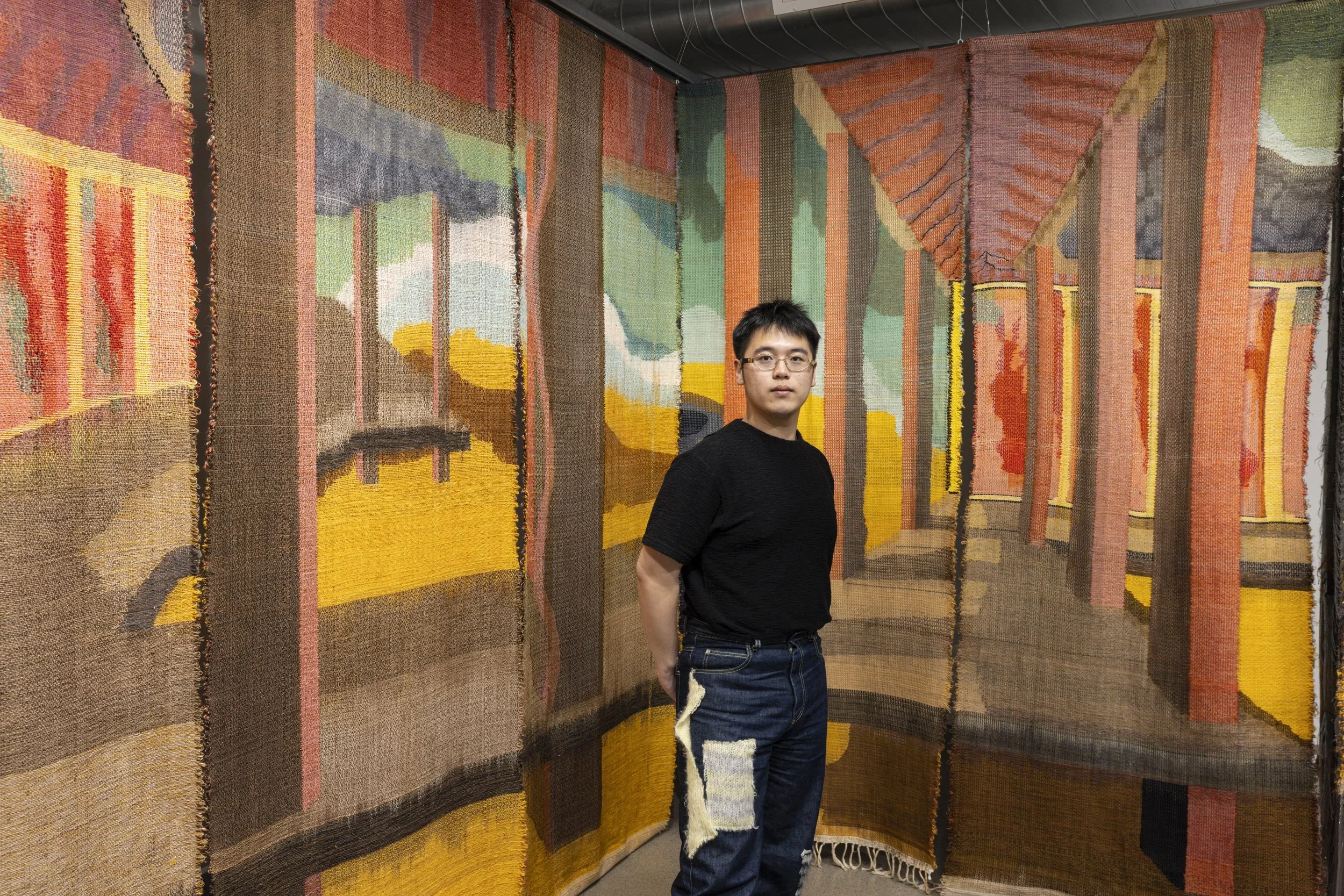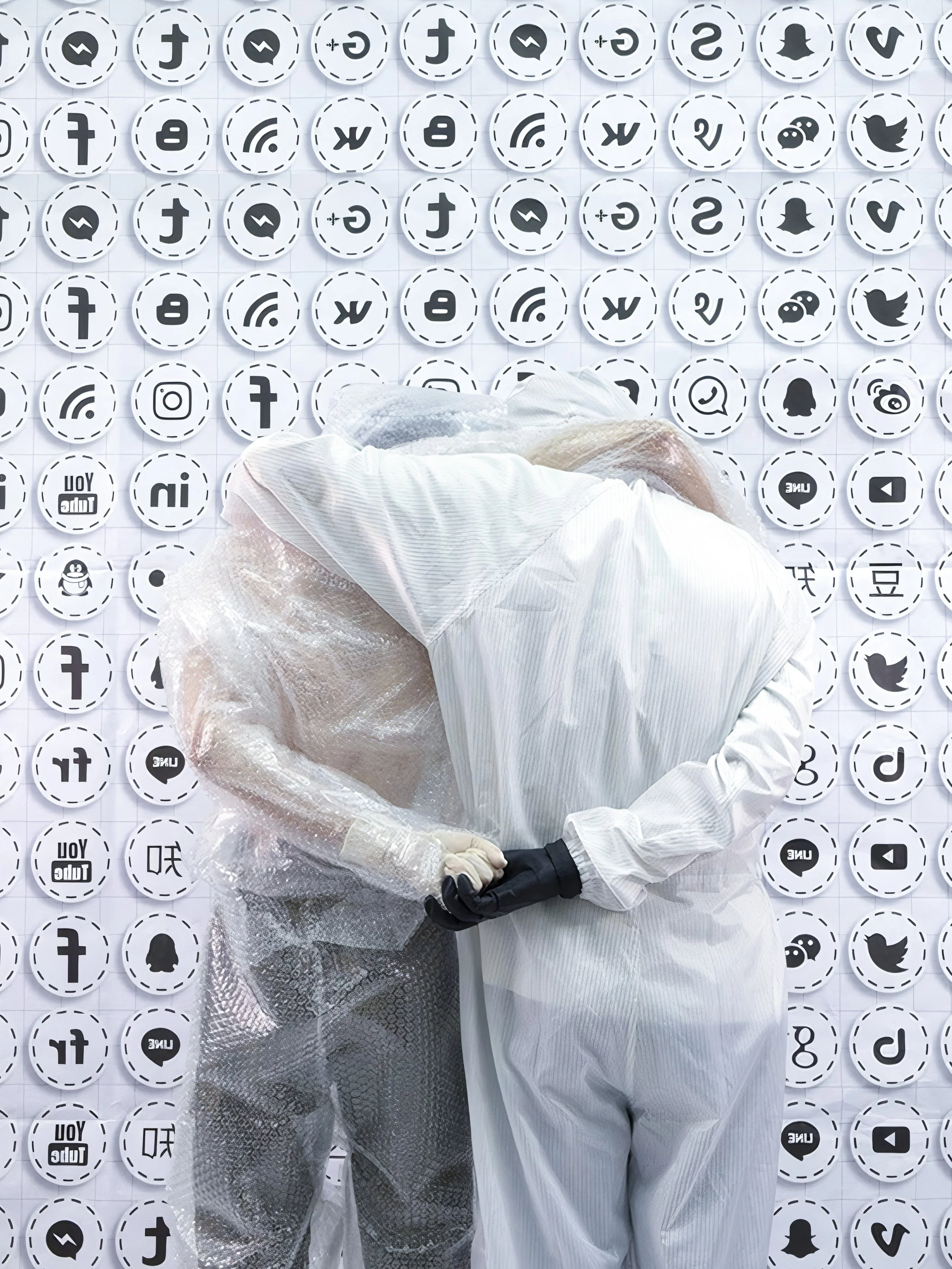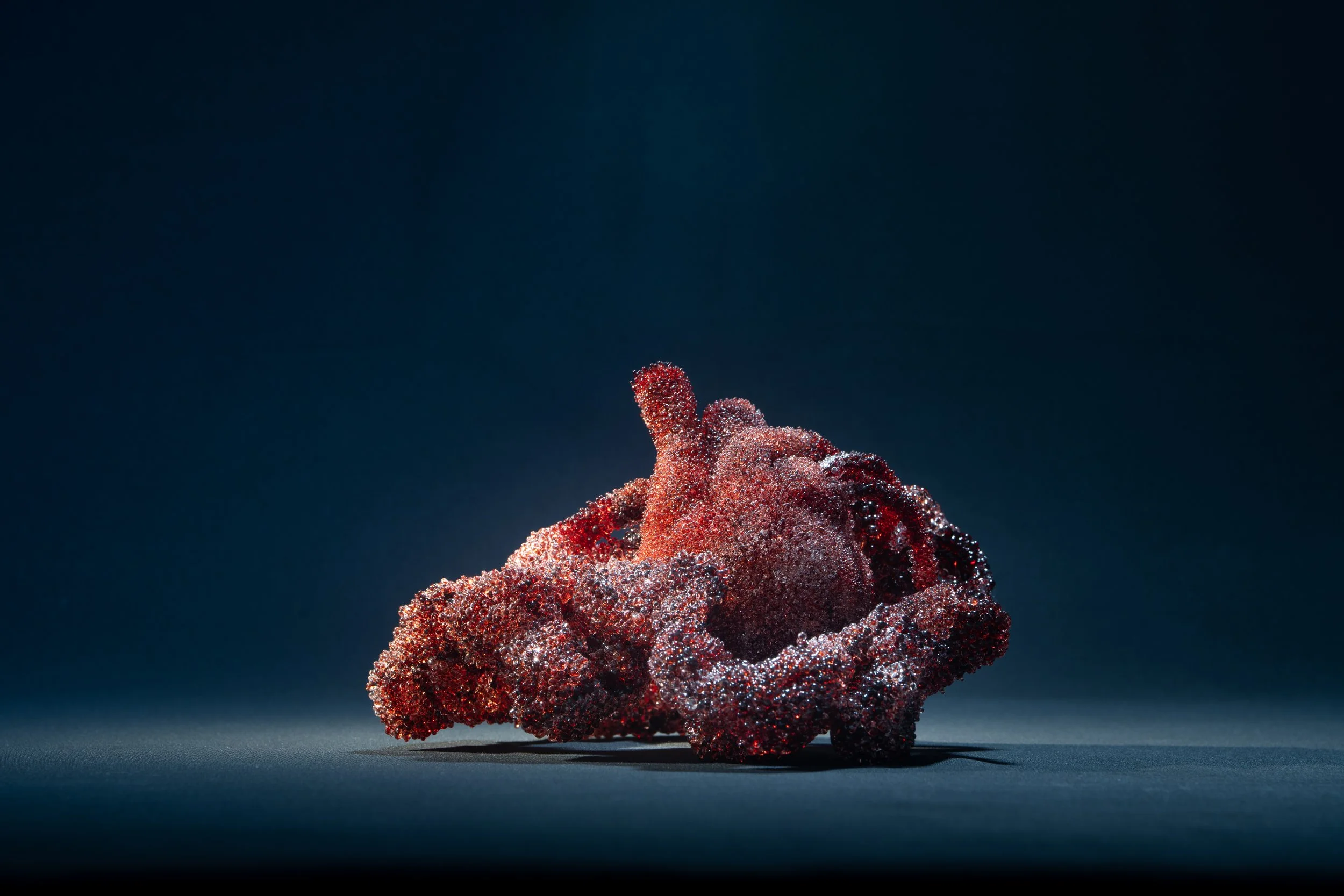9 Questions with Cate Wind
Born in Durban, South Africa, Cate knew from an early age, that her future lay somehow and somewhere rooted in the world of art. After completing her apprenticeship as a glass and porcelain painter at Glasfachschule Rheinbach, where she learned, amongst other things, to smash glass ceilings and break her own boundaries in glass design, she went on to also study visual communication. In 1997, fully qualified in the technically creative industry, Cate first turned her attention to the corporate world and founded a business dealing with design and photography. Through hard work and industrial talent, Cate’s business grew, successfully expanding with branches across Germany and in Switzerland.
While on her path to professional independence and security, Cate was awarded the “2008 IHK Vision Businesswoman” prize in the tri-border region of Germany, Holland, and Belgium. To the eye, it appeared that she had reached the peak of her career and the pinnacle of success. However, it was clear to Cate that the journey to find her place in the world was still only at the very beginning. At the moment she lives and works in Berlin and focuses almost exclusively on her art.
Cate Wind creates sculptures and installations that reveal correlations between modern knowledge and ancient systems of belief. She assembles refined materials such as metal, glass, or resin with discarded found objects including gearwheels, vintage herbariums, or religious textiles.
Fascinated by the interaction of materials with different feels and auras, her sculptures can be described as experiments that try to investigate the internal energies of various matters and how they affect each other.
Cate Wind in her studio.
ARTIST STATEMENT
Cate Jo Ann Wind is an artist. She is also a transformer of science into art and a mediator between the invisible and the visible. Her paintings are reflections of the soul and her assemblages are culturally creative objects of power that interlock energy with personal resources. By connecting experimental art with deeply sensitive conventional art, her innovative works reveal the energy contained in various materials. Where her art may not fit into any one particular genre, Cate Jo Ann Wind boldly creates her own.
During her formative childhood in South Africa, she developed a fascination with naturopathic medicine, voodoo, and ceremonial rituals.
Energy and its transformation are constant topics in her work. Cate creates hybrid sculptures in which her interest in quantum mechanics and metaphysics as well as her research of folk medicine, ancient symbols, and alternative healing practices interlock.
Cate finds inspiration from the inner wise, a method of comprehending the energy patterns of humans and systems, as well as from healing codes, herbology, and cosmic symbols. Her stimulus also comes from quantum physics. An admirer of Leonardo da Vinci, who was famous as both an artist and as a scientist, Cate allows her art to be influenced by analysts and inventers such as Uwe Albrecht, Dr. Joe Dispensa, Masura Emoto, Hilma af Klint, and Cleve Backster. Just as scientists create networks to share and spread knowledge, Cate envisions her future to include the formation of a “tribe”, a small group of like-minded people from diverse fields with whom to dispense and expand various skills and technical expertise.
Cate Wind_Sorry to the Flowers (2019)©
GET YOUR LIMITED EDITION PRINT >>
Sorry to the Flowers| WORK STATEMENT
Sorry to the flowers is a sensitive involvement with the fragility and transience of the nature surrounding us in times of climate change. The flowers are made of artificial materials, whose graceful appearance evokes the pleasant and uplifting feeling of joy that nature so often evokes. However, through their artificiality, which requires neither water nor sunlight, it is taken ad absurdum. Nevertheless, my flowers react to the room light or an installed light and colorful shadows move on the floor.
Could you tell us a little more about your background, and how did you begin making art?
Born in South Africa, I was enchanted very early by the mysterious energy of the country. From these energies, my strength and spirituality grow, which is very strongly connected to my origin.
My enthusiasm for painting and drawing was awakened early as a child. I started my creative education as a teenager with a handcraft - I am a glass and porcelain painter. During this education, I learned the basic knowledge and skills that build the foundation of my artistic work: such as material theory, perspective drawing, composition theory, pictorial design, classical painting, as well as abstraction, and the development of three-dimensional objects.
While being in glass school, I discovered my love for the fascinating material of glass and have been working with it continuously since then.
During and after the time of my studies in Visual Communication, I completed intensive education courses in visual arts at a number of internationally renowned art summer schools and took private lessons with artists such as Vincent Desiderio in order to increase my knowledge and skills of fine arts. Even during my studies, it was important to have my own studio so that I could work creatively and artistically.
I always wanted to set myself apart from the work of my fellow students, to push the limits of the assignments in order to bring my individuality into the artwork. The achievable was often not enough, I wanted to explore the possibilities, to try myself out and so I started combining glass with other materials. During that time, I developed my motivation to always find a playful approach, experiment, create new things and explore the unknown on an artistic path, in addition to the focus on learning.
What does your art aim to say to the viewers?
My approach to art is very sensitive on many levels. I want to raise awareness of the subtle energy - a hypothetical form of matter that is supposed to be finer and more mobile than the rough matter that makes up visible bodies.
The sources of every human being's spirituality have been there for a long time - unfortunately, most have lost their awareness and have forgotten to search for these sources. But energy is in everything, whether we believe in it or not, and for me, it is an important source to work with it and perceive vibrations. The energy follows one' s consciousness, and through my creative and medial abilities, I can transfer it into reality, and in doing so, I create reality and its visible effect.
Through my art, I want people to recognize what surrounds them or at least engage themselves with this thought experiment - to let the invisible become visible.
If I can take the viewer on this journey and share my perception of the world through art, it means a lot.
Cate Wind_Egoism (2019).jpg
My work “Egoism” deals with the human being on a more personal level. I negotiate the human ego with the help of old drawing circles, which in contrast to their original function can no longer rotate on their own axis. With its threateningly protruding tips, the sculpture appears aggressive and keeps the viewer at a distance. The curvature created by putting the circles into each other results in the infinity sign ∞, which is not completely closed, however, and visualizes my hope to break the age-old cycle of egocentricity and hostility.— Cate Wind.
Cate Wind_Egoism (2019)_detail.jpg
How do you find connections between nature and art?
"Mankind is the nature that one becomes aware of." This statement by the painter František Kupka I remember when it comes to the connection between nature, art, and the human being. Because creativity is our true nature, without it, in my opinion, there would be no further development in humans, and so we should treat nature with care, as well as ourselves.
Nature is an important stimulus and a rich source of inspiration. When I walk through nature, it is, on the one hand, about an energetic exchange - on the other hand, about being guided by the surrounding energy.
Like a trail reader, I open my perception and am triggered by certain formations in nature. These formations give information from higher consciousness or intuitively transfer topics into my creative process.
For example, during a walk, I perceive symbolic images and impulses from nature, which can be part of my art. To name a specific image: a tree knocked over by a storm can reveal the topic of uprooting and inspire my creative process and realization.
For me, nature is more than what we see outdoors. It has many dimensions and fractals - even the golden ratio can be found in art as well as in nature.
What was the creative process for your piece, "Sorry to the flowers."
My work "Sorry to the Flowers" consists of various artificial materials such as laboratory vessels, head massagers, and colored handcrafted crown glass, which cause sensory associations. By rearranging the various objects, a story emerges that stimulates senses, can be felt and empathized.
Only through the particular distinctive combination of the objects, something new emerges, which is more than the individual parts themselves. It can be understood like a language, like sentences composed of individual words. As a new combination, the whole convey a new message. Sometimes it also happens that combined objects do not want to belong together, do not fit together. Then I step back and simply let myself drift and float because I don't want to force anything but rather resonate with what is given. However, when the objects find each other - it is almost magical.
Concerning my creative process for "Sorry to the Flowers", it is important to know that my reflection on the subject is not meant to be an identical replica of reality, but the creation of another reality that resembles the first, but without copying it. So I question the relationship between landscape image, image, and reality.
In terms of content, I am focusing on the fragility and transience of nature surrounding us in times of climate change. In the last decades, flowers have bloomed earlier, indicating the constant warming of Earth.
Since art can influence our reality, I wanted to visualize our misery with "Sorry to the Flowers" and create a feeling about the easily understood subject. Therefore, it reaches many because most people are accessible through emotions. Shame, anger, fear, and joy, and love are feelings that move us and direct our attention. For me, it is satisfactory to make something understandable - to visualize it.
Cate Wind_Sorry to the Flowers (2019)_1.jpg
Cate Wind_Sorry to the Flowers, 2019, Detail
Cate Wind_Sorry to the Flowers, 2019, Simulation
Why do you use circles and rotation so frequently in your work?
The circle is a fascinating shape, the most beautiful form of entirety. In many cultures and religions, it is given special meaning and is regarded as a symbol of perfection. It is infinite in its movement - without a beginning nor end. This symbolism is also found in my sculptures and installations, where topics such as reincarnation, karma, and infinity play a major role. The circle is like a universal code and can be found everywhere in nature, like the vortex, which enables and shows our cosmos' endless movement and growth. In my artistic work, circles and rotations emerge as a very natural movement, as an outcome from my tension and discharge, and in doing so, it feels good - similar to dancing.
What aspect of your work do you pay particular attention to?
Objects and their immanent energies have a significant influence on my work, giving a lot of space to develop. The ambivalence of fragility and heaviness are often involved.
I want to integrate these energies into my artwork so that they become accessible to everyone.
While using techniques that have access to resonance and information fields, such as kinesiology and psychometry, I gain access to things that are brought out of hiding into the light and incorporate them into my art.
My intuition is always-present guidance, although I would like to push the "pure look inside" even further, which can almost be seen as hypertension.
Used objects carry their own history as well as these described energies. The principle of equipment, which derives from science, describes that it has a reason if something is there. Therefore, I like to work with objects that appeal to me, tease me, and sometimes remain with me for a long period. Sometimes many years pass by before I take them out again and combine them with something new. Through selection and recombination, I place them in a new context, as with the "Objets trouvés" - their individual signs of wear, physical traces of memory, however, remain. I am interested in how these individual energies interact. In the end, this visual transformation shows my own artistic signature.
Cate Wind Samsara, 2019
The theme of transience and rebirth is also taken up by the related installation “Samsara.” The countless different vases are in a tense relationship of individuality and uniformity. In changing the perspective from above, the shiny silver vases of different shapes create a uniform picture of black circles of their inner life. They symbolize our souls and the memories of our past lives buried deep within them, to which our consciousness has no active access.
Cate Wind, Samsara, 2019
How do you keep yourself up to date with the latest digital trends and technologies that have today a significant impact on the art world?
I not only walk through the world with my eyes wide open but also browse through the World Wide Web, read publications and visit exhibitions.
Beyond that, augmented reality is a very exciting field. In terms of realizing my art, it could be an interesting technology that brings even more power and expression into my work. However, I still lack an intensive study about it - also because it has no current priority for me. Due to digitalization, it is also very remarkable how the art market and the accompanying change or transfer to the Digital World are proceeding, which was recently intensified by the Covid19 pandemic. It remains to be seen where it leads us.
What are you working on now, and what are your plans for the future?
I am currently exploring the subject of "rushing through." Life can be described by the constant state of rushing through. It is a layering of situations, experiences, crises, life cycles, opportunities, and feelings that define our perception.
It passes you by, and despite the speed, profound experiences can break through and become trapped permanently.
This is the state I try to capture and reproduce visually. Poured tin meets delicate shapeable wire mesh, which I once again infuse with colored glass. Broken pieces of glass are drawn through a thick layer of oil paint, leaving crisscrossing traces of varying depth and shape. A fine composition of superimpositions and reflections is created, which are closely interwoven. Out of different materiality and textures, I would like to continue to create new poetic assemblages and deal with the subject even more intense. I bend paint and let glass grow over it.
For me, art and mediality belong together. In seminars and training such as Intuitive Diagnostics and Healing Consciousness on the quantum level, I have acquired valuable techniques that I would like to develop to increase my sensitivity and extrasensory perception it is essential for my art.
Without question, I will continue to explore the field of healing. I firmly believe that art can be a means of healing. In my series "Voodoo," I worked a lot with healing symbols - so I would like to take that up again and, in a way, returning to my roots.
Cate Wind, Samsara, Simulation
They say if you could be anything but an artist, don't be an artist. What career are you neglecting right now by being an artist?
I have always given a lot of space to my artistic potential while being creative and living a visual artist's life. Besides, however, I was also CEO and photographer of a super design agency that I built up 25 years ago: 100 employees and 4 locations in Switzerland and Germany - something I am proud of. Nevertheless, I just realized in time that I would like to dedicate my life to art. I need to work with various materials and topics of subtle energy and mediality to be happy. A few years ago, I arranged the agency in such a way that I can nearly exclusively concentrate on my art. Thanks to my great team, I can choose to do both.
When only the unknown creates motivation or movement, one should leave its familiar environment to seek out and discover oneself in a new setting - empty your mind and create a vacuum to attract the new.
It is important to break one's routines and face irritations so new perspectives will reveal themselves to us.
For me, making art is a decision made out of passion and deep conviction - like an inner call that I have to follow.





























